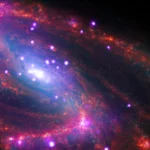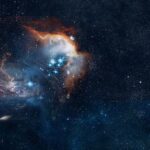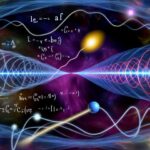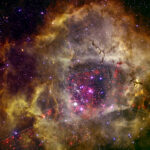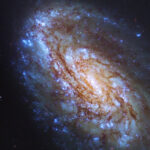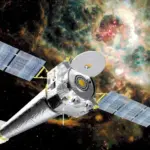The Schumann resonances (SR) are a set of spectrum peaks in the Extremely Low Frequency portion of the Earth‘s Electromagnetic Field spectrum. Schumann resonances are global electromagnetic Resonances, generated and excited by Lightning discharges in the cavity formed by the Earth’s surface and the Ionosphere.
The global electromagnetic resonance phenomenon is named after physicist Winfried Otto Schumann who predicted it mathematically in 1952. Schumann resonances are the principal background in the part of the electromagnetic spectrum from 3 Hz through 60 Hz and appear as distinct peaks at extremely low frequencies around 7.83 Hz (fundamental), 14.3, 20.8, 27.3, and 33.8 Hz.
Schumann resonances occur because the space between the surface of the Earth and the conductive ionosphere acts as a closed, although variable-sized Waveguide. The limited dimensions of the Earth cause this waveguide to act as a Resonant Cavity for Electromagnetic Waves in the extremely low frequency band. The cavity is naturally excited by electric currents in lightning.
In the normal mode descriptions of Schumann resonances, the Fundamental Mode is a Standing Wave in the Earth–ionosphere cavity with a Wavelength equal to the circumference of the Earth. The lowest-frequency mode has the highest intensity, and the frequency of all modes can vary slightly owing to solar-induced perturbations to the ionosphere (which compress the upper wall of the closed cavity) among other factors. The higher resonance modes are spaced at approximately 6.5 Hz intervals (as may be seen by feeding numbers into the formula), a characteristic attributed to the atmosphere’s spherical geometry. The peaks exhibit a spectral width of approximately 20% due to the damping of the respective modes in the dissipative cavity.
Observations of Schumann resonances have been used to track global lightning activity. Owing to the connection between lightning activity and the Earth’s climate, it has been suggested that they may be used to monitor global temperature variations and variations of water vapour in the upper troposphere. Schumann resonances have been used to study the lower ionosphere on Earth, and it has been proposed as one way to explore the lower ionosphere on celestial bodies. Some have suggested that lightning on other planets might be detectable and studied by means of Schumann resonance signatures of those planets.
Effects on Schumann resonances have been reported following geomagnetic and ionospheric disturbances. More recently, discrete Schumann resonance excitation has been linked to Transient Luminous Events — Sprites, ELVES, Jets, and other Upper-Atmospheric Lightning. A new field of interest using Schumann resonances is related to short-term Earthquake Prediction.
Interest in Schumann resonances renewed in 1993 when E.R. Williams showed a correlation between the resonance frequency and tropical air temperatures, suggesting that the resonance could be used to monitor Global Warming. In Geophysical Survey, Schumann resonances are used to locate offshore hydrocarbon deposits.













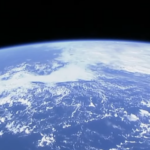

![Space Streams - Nebula [Ambient] image](https://space-streams.com/wp-content/uploads/2024/11/space-streams-nebula-150x150.png)
